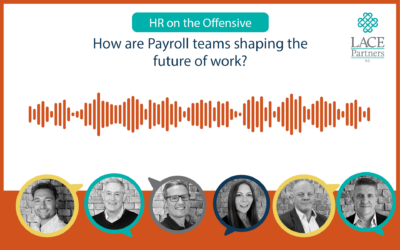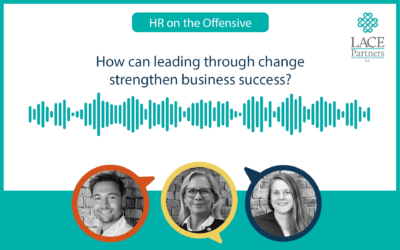Our latest Talent Dinner gathered key players to discuss the challenges faced by HR and Talent leaders and, of course, to come up with some solutions. Here’s what we discussed, learned and absorbed. We regularly run networking dinners and have a number of different communities in specialist areas such as HR shared services, payroll, as well as specialist topic-based events looking at a wide variety of topics such as employee experience, transformation and more.
The events are invitation-only but if you’d like to chat to us about possible involvement, simply fill in the form at the bottom of this page and let us know which community you have an interest in.
Following the turbulence of the last couple of years, HR and Talent leaders are shifting their talent acquisition approach towards internal strategic solutions. Here’s why.
Find our talent acquisition feet on shifting sands
We’re all facing constantly changing priorities for talent acquisition thanks to the enduring impact of COVID-19, the ensuing ‘Great Resignation’ across multiple sectors, economic certainty driven by socio economic factors such as Brexit and global uncertainty due to Russia’s war in Ukraine.
That’s quite a list in itself, but there’s also the recent turbulence of the banking sector and what that means for our organisations, the cost-of-living crisis and what it means for our employees.
All of this is leading to the rise of skills-based organisations that are looking internally at what they already have, rather than searching externally for the perfect skillset. The strategy lies in maximising this internal approach for future resilience. This was one of the key discussion points at our latest forum gathering and the assembled Talent leaders all agreed that looking internally to fill your talent solutions is a fundamental part of any successful talent strategy.
Moving towards a skills-based approach
LACE research backs up these changing dynamics. One of our team, David Pacifico, has recently spoken in depth with 30 global organisations (including AstraZeneca, Ericsson, HSBC, PepsiCo, Microsoft and VW) about how exactly they’re navigating these changing dynamics. We’ve created a document which outlines the ten leading practices in a simple PDF – if you’d like to get a copy then fill in the form below and we can reach out and send it to you.
But all have one thing in common – they’re all aspiring to become skills-based organisations. They are avoiding concentrating solely on job titles and positions, focusing more on skills already inherent in their own company mix. They are asking themselves the key question: “What do we have as organisations that we can share, use, capitalise on and that can help us build our resilience for the future? How can we transform our approach to learning and skills sharing? How do we leverage the skills we have and implement reskilling across the board?” and the answer to these questions are helping to shape their future talent strategy.
Cracking the code of internal reskilling
The key questions are being asked by many businesses, but based on the work already conducted, as well as feedback from attendees at our forum, no single company has yet managed to crack this conundrum fully, although some organisations are leading the way. Companies like Unilever, AstraZeneca and Ericsson, for example, are beginning to create a culture of reskilling and learning as an explicit part of their business strategy.
For Unilever, the future of work means meaningful work for everyone by equipping their people for the changing world. Providing skills for life through ongoing learning is part of their commitment for their workforce, as is working with young people to develop the skills they need to find meaningful work.
Through the transformation of approaches to learning and through the leverage of cutting-edge learning experience and blended learning solutions, organisations can revolutionise talent acquisition and management practices.
How ready are organisations for this internal transformation?
There are many challenges for organisations to gear up for such a transformation. Many companies don’t have skills taxonomy frameworks in place, and even if they do, they find them difficult to keep up to date and relevant.
Any attempt to homogenise skill levels across business units and functions will end in failure, as this is an impossible ask. It’s also asking the wrong question. Rather than getting bogged down in the terminology of skills, capability and competency, they should start with the question, “What is the critical talent or skills issue we are trying to solve for in a particular business unit, function or geographic market?”
Internal mobility needs to be the key focus
Attendees on the night all agreed that there needs to be a greater focus on internal mobility and finding ways to harness the untapped potential of existing employees. This flips the talent acquisition script from reach out externally to recruit, to utilising what already exists in different ways.
Not only does this unleash potential, but it also helps to reduce attrition and demonstrates to employees that they don’t need to leave the business to progress in their career.
Taking an ‘internal first’ approach has so many benefits:
- Employees need only to have core skills and the ability to upskill, rather than being a ‘100% fit’ immediately
- Lowers the risk of people leaving and allows people to learn through career progression
- Reduces external cost of hire
- Improves employee wellbeing as it’s a clear demonstration of the business investing in their futures.
By shifting behaviour surrounding talent acquisition in small ways, it’s possible to really change the tenor of the result.
For example, by promoting new roles internally for a week before they are released externally, it’s possible to boost internal hires from 10% to 50%. To make this work, it’s imperative to be transparent about the opportunities available to existing employees.
Changing obsolete attitudes towards talent
Shifting the internal culture towards embracing the concept of sharing talent within the organisation is another challenge. It’s not uncommon for line managers to hoard talent and restrict the possibilities for those employees to move around. It’s also more difficult emotionally to be rejected for an internal position, and this is another factor to consider.
By rewarding managers for facilitating internal mobility and by communicating success stories, it should be possible to move this attitude forward.
The hard facts are that we can’t always find the exact skillsets we need immediately. But we can find people with potential to learn, to grow and to absorb. This growth mindset is absolutely key and it’s something we should be searching for when hiring employees.
We need to remember that skills can be taught – it’s the attitude and ability to learn that is more important. The traditional attitude of only wanting to hire people who have direct experience of a role should be left on the editing floor now.
Added to this is the growth of automation – if digitisation is fundamentally changing the kinds of skills needed anyway, the best solution has to be reskilling to redeploy.
Ditch the career ladder in favour of the career matrix
Of course, the very definition of ‘talent’ varies from organisation to organisation and sector to sector. But either way, Talent and HR leaders need to be looking out for high performers and performers with potential for more.
It’s not a one-size-fits all approach and should be far more about the individuals involved. For example, a highly skilled individual who has specialist knowledge about a narrow subject doesn’t necessarily need to be reskilled. Perhaps they can share the value of that expertise.
But reskilling and redeploying employees who aren’t as specialised can massively broaden their outlook. Businesses who truly care about their employees are having the most success in the post-pandemic workspace.
Employees expect more and organisations can give this to them while maximising their potential for its future success. Career pathways in 2023 are very different to the old-school idea of a ladder. We’re here to provide the environment that allows a full set of career experiences for employees.
Interested in talking to us about how we can help you with the shaping of your Talent Acquisition or Talent & Learning function? Fill in the form below and we’ll be happy to have an initial chat.






